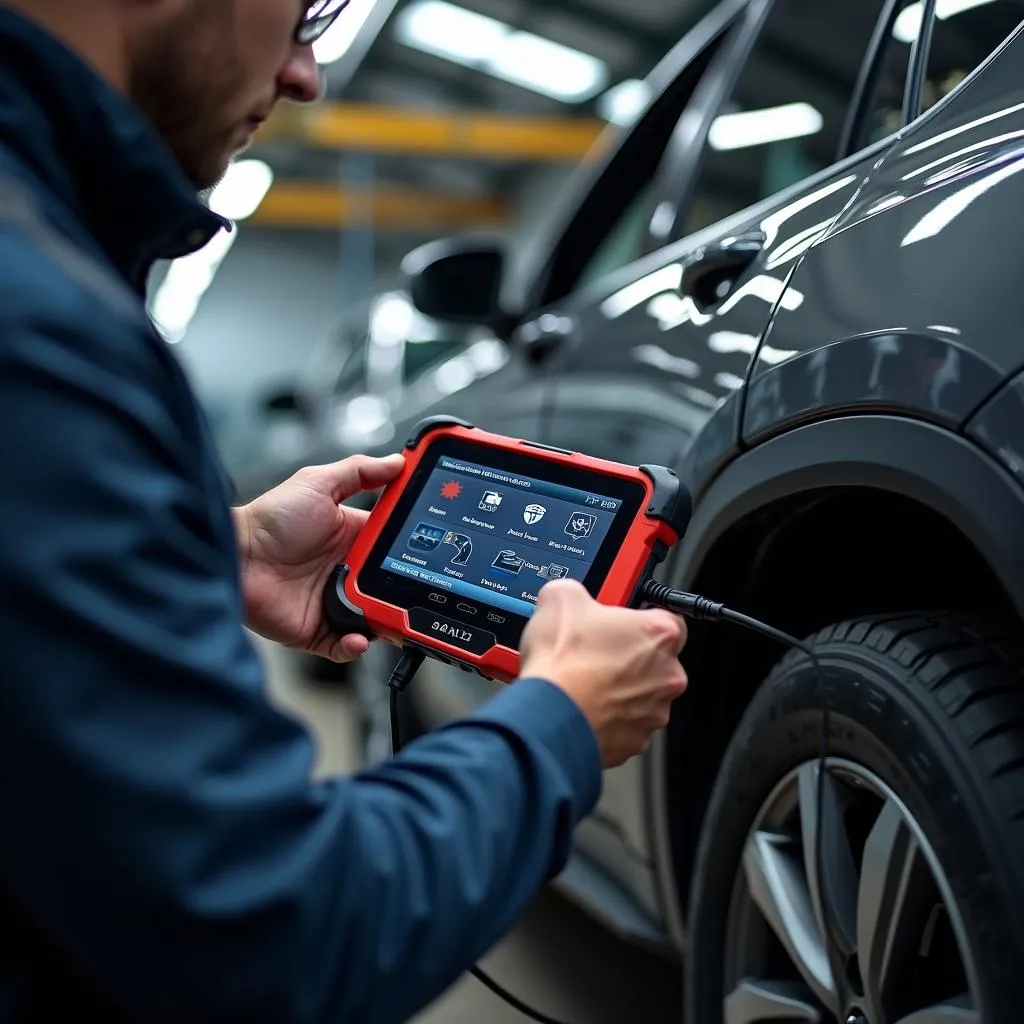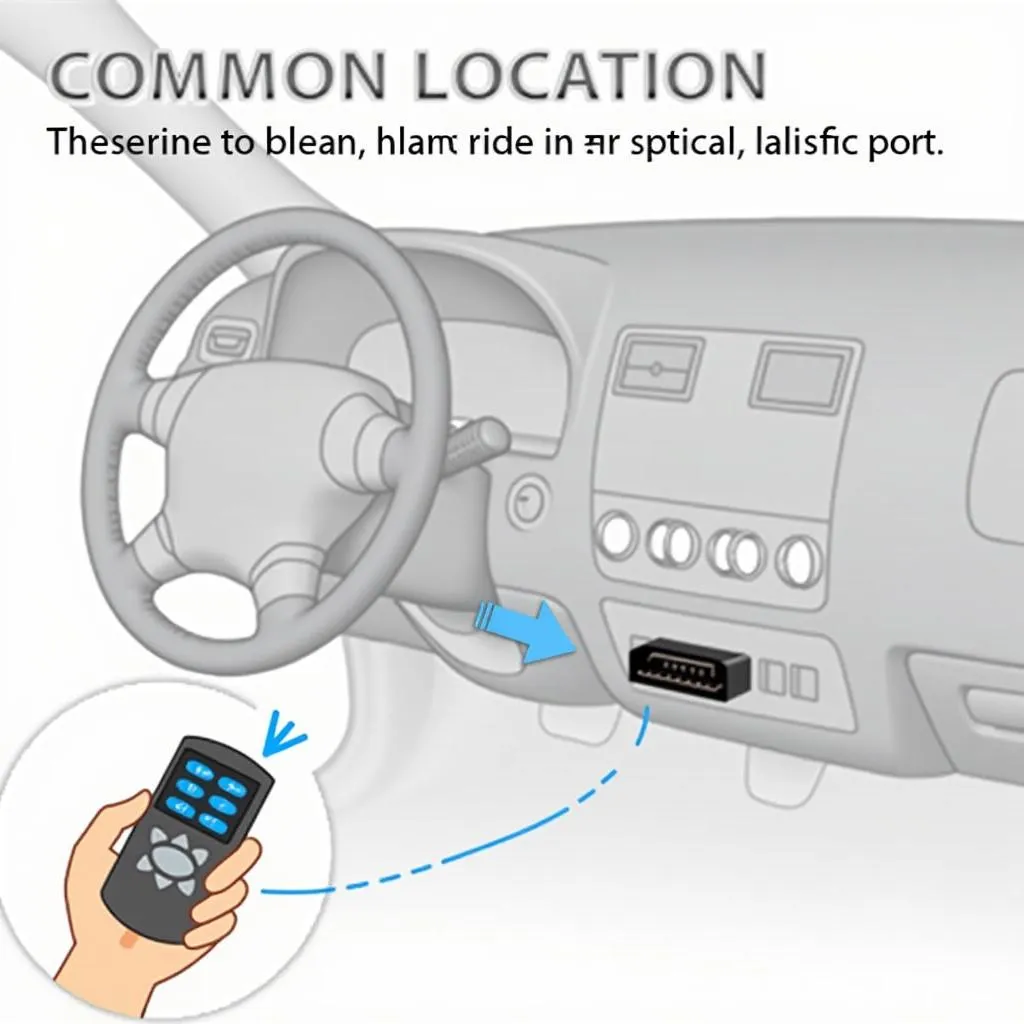A Scan Tool That Can Read Abs Codes is an essential tool for any mechanic or car enthusiast. Anti-lock Brake System (ABS) issues can be tricky to diagnose, and without the right equipment, you’re left guessing at the problem. This guide explores everything you need to know about these scan tools, helping you make an informed decision and tackle those ABS lights head-on.
Why You Need a Scan Tool That Reads ABS Codes
Your car’s dashboard is like its communication center. When that ABS light pops on, it’s signaling that something within the system needs attention. Ignoring it could lead to reduced braking efficiency and even dangerous driving situations.
Here’s why a specialized scan tool is crucial:
- Accurate Diagnosis: Unlike generic code readers, ABS scan tools delve deeper, pinpointing the exact sensor, module, or component causing the issue.
- Time and Money Saver: No more blindly replacing parts hoping to stumble upon the culprit. Accurate diagnosis means quicker repairs and avoiding unnecessary expenses.
- Enhanced Safety: A properly functioning ABS is critical for safe braking. Addressing issues promptly ensures your vehicle performs at its best when it matters most.
 Car dashboard with ABS warning light illuminated
Car dashboard with ABS warning light illuminated
Types of Scan Tools That Read ABS Codes
Navigating the world of scan tools can feel overwhelming. Let’s break down the common types available:
1. Basic ABS Code Readers
- Pros: Affordable and easy to use, these are great for DIYers who want to understand basic ABS fault codes.
- Cons: Limited functionality, may not provide in-depth data or advanced features like code clearing.
2. Advanced OBD-II Scanners with ABS Functionality
- Pros: Offer a wider range of diagnostic capabilities beyond ABS, including engine, transmission, and airbag systems.
- Cons: Can be more expensive than basic code readers but offer excellent value for their versatility.
3. Professional-Grade Scan Tools
- Pros: The gold standard for mechanics, these tools provide comprehensive ABS diagnostics, advanced programming functions, and often come with software suites for detailed analysis.
- Cons: Significant investment, may be overkill for casual users.
 Mechanic using a professional-grade scan tool on a vehicle
Mechanic using a professional-grade scan tool on a vehicle
Choosing the Right Scan Tool: Factors to Consider
- Your Skill Level: Are you a DIYer or a professional mechanic? Your expertise will influence the complexity and features you need.
- Vehicle Compatibility: Not all scan tools work with every make and model. Ensure the tool you choose supports your specific vehicle.
- Budget: Prices vary significantly. Determine your budget and prioritize features that align with your needs.
- Features: Consider what matters most – code reading, data logging, bi-directional control, live data streaming, etc.
How to Use a Scan Tool to Read ABS Codes
Once you’ve got the right tool, using it is fairly straightforward:
- Locate the OBD-II Port: This port is usually found under the dashboard on the driver’s side.
- Connect the Scan Tool: Plug the scan tool into the OBD-II port.
- Turn on the Ignition: Turn the ignition to the “on” position but don’t start the engine.
- Read the Codes: Follow the on-screen prompts on your scan tool to access and read the ABS codes.
- Interpret the Codes: Refer to the user manual or an online database to understand what each code means.
 Location of OBD-II port in a vehicle
Location of OBD-II port in a vehicle
Common ABS Trouble Codes and Their Meanings
Here are some frequently encountered ABS codes:
- C1223: This code often points to a problem with the right front wheel speed sensor.
- C1224: This code indicates a potential issue with the left front wheel speed sensor.
- C1095: This code suggests a problem with the hydraulic pump motor circuit.
Important: This is not an exhaustive list. Always refer to a reliable source for accurate code definitions specific to your vehicle.
Beyond Code Reading: Additional Features
Many scan tools offer features beyond basic code reading:
- Live Data Stream: Observe real-time sensor data to diagnose intermittent issues effectively.
- Bi-Directional Control: Test components like ABS solenoids by commanding them on and off.
- Data Logging: Record data over time to pinpoint problems that occur sporadically.
Conclusion
A scan tool that can read ABS codes is an invaluable investment for maintaining your vehicle’s safety and performance. By understanding the different types available, key features, and how to use them effectively, you’ll be well-equipped to diagnose and address ABS issues with confidence.
Need expert advice? Contact the team at ScanToolUS at +1 (641) 206-8880 or visit us at 1615 S Laramie Ave, Cicero, IL 60804, USA. We’re here to help you find the perfect scan tool for your needs.

Pingback: Troubleshooting Your ABS with an OBD2 Scan Tool - Car Scan Tool